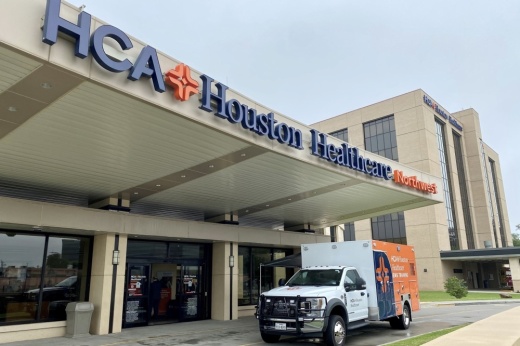The big picture
According to a statement from Houston Methodist, its hospitals remained open throughout the storm, and the hospital generators are designed to turn on immediately when electricity is lost.
Justin Kendrick, senior vice president and CEO of Memorial Hermann The Woodlands Medical Center and Memorial Hermann Northeast Hospital, said the hospitals' emergency plan includes having 96 hours of generator power and provisions.
"Thankfully, hospitals have generator power so we continue on with taking care of urgent needs while operating on full generator power," he said.
Among other hospital systems in the Greater Houston area, HCA Houston Healthcare reported its hospitals remained open through the storm and did not sustain major damage, and St. Luke's Health reported on its website its hospitals and ERs are open, though some appointments could be affected.
Following the approval of 67 Texas counties for federal disaster assistance as part of a Major Disaster Declaration, Gov. Greg Abbott announced in a July 11 press release an additional 25 ambulances and a 250-bed medical shelter was sent to the Houston area to support local EMS and hospital capacity needs.
The assistance comes as widespread power outages caused a number of closures of freestanding emergency rooms and urgent cares, leading some hospitals to request people to only visit ERs for major emergencies.
“Many of our ERs have seen an increase in patient volume due to storm-related complaints, including heat exhaustion, heat stroke and carbon dioxide exposure," HCA Houston Healthcare officials said in a statement. "We are also seeing many respiratory patients who need their oxygen tanks refilled. Due to this increased volume, we ask that people only visit our emergency rooms if they are truly in need of emergency medical attention.”
Zooming in
Kendrick said many of the hospitals' ER cases in the wake of the storm have been related to oxygen and dialysis needs.
“It’s that added variable ... of patients that we are now caring for,” he said. “We are also challenged from a post-acute placement standpoint with other skilled nursing facilities that we would typically be discharging patients to facilities that may still be functioning without power or water, so those patients just aren’t able to leave the hospital.”
The Montgomery County Hospital District reported a total of 3,201 medical and fire 911 calls from 8 a.m. July 8 to midnight July 11, with the highest number of calls relating to breathing problems.
According to Harris Health, a number of health care centers were closed as of July 12, including:
- Ambulatory Surgical Center at LBJ Hospital
- Baytown Health Center
- Cypress Health Center
- Endoscopy Center at Quentin Mease Health Center
- Gulfgate Health Center
- Martin Luther King Jr. Health Center
- Monroe Same Day Clinic
- Northwest Health Center
- Pediatric and Adolescent C.E. Odom Health Center
- Pediatric and Adolescent Pasadena Health Center
- Rehabilitation Services at Fournace Place
- Sareen Same Day Clinic
- Settegast Health Center
- Squatty Lyons Health Center
- Thomas Street at Quentin Mease Health Center
- Vallbona Health Center
What they’re saying
“When our community needs us, we are here for them even as we cope with circumstances beyond our control,” Houston Methodist officials said in a statement. “Across the Houston Methodist system, emergency departments have been busy, as expected, especially with an influx of dialysis and oxygen patients needing power to operate their medical equipment.”
"The busiest times during any kind of weather-related event is after the storm because we not only have the ... needs that were delayed for a few a days not being able to get out and about in the storm, [combined] with the other social needs that present themselves due to the lack of power and water," Kendrick said.








